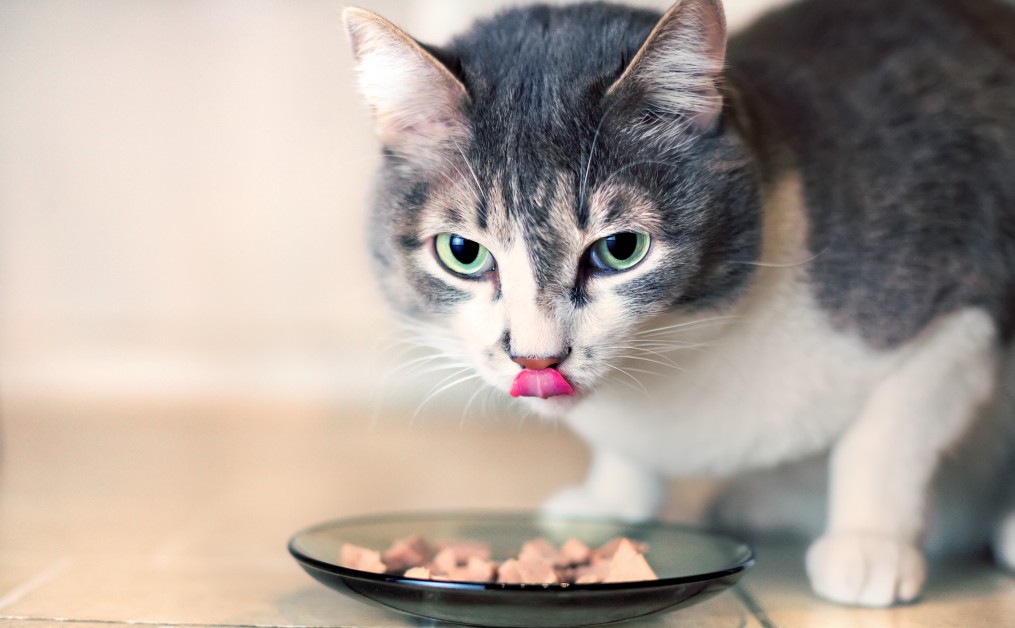Benefits of Switching to High-Protein Dog Food
A high-protein diet gives dogs essential nutrients they need for more energy and better overall health.

Much like their human companions, dogs require six basic nutrients, including water, fats, vitamins, minerals, carbohydrates, and proteins. While you may not have given much thought to how much protein your pet’s diet contains, these complex molecules are responsible for many important processes on the cellular level. High-protein dog food has many benefits for puppies and adult dogs at all stages of life, from muscle repair and improved skin health, to lean muscle growth and a shiner coat. Before starting your pet on a new diet, familiarize yourself with the benefits of a high-protein diet for dogs.
What Exactly are Proteins and What Do They Do?
It can be difficult to understand why protein is so important to your dog’s diet without knowing exactly what these large biomolecules are and how they function in the body. Proteins are made up of many smaller units known as amino acids, which attach to one another to form long chains.
Proteins are required for the function, structure, and regulation of the body’s organs and tissues. Once proteins are broken down into amino acids in the digestive system, they are transported to cells. While the body is capable of creating some amino acids on its own, others are derived from food sources.
When most people think of protein, they associate this nutrient with muscles and meat. Although protein can be found in a variety of foods, meat generally has the highest protein content. You may also know that protein is required for muscle creation, which is why protein is often associated with eating meat.
What Are the Benefits of High-Protein Dog Food?
Growing dogs require a minimum dietary protein level of 18 percent dry matter (DM), while adult dogs need 8 percent DM to thrive. However, AAFCO recommends that dogs are fed diets with at least 22 percent DM for growth, or about 18 percent for maintenance. By giving your pet a high-protein food, your dog can enjoy the following benefits:
Healthier Skin and Coat
The condition of your pet’s skin and coat is heavily reliant on their diet. When dogs lack essential nutrients in their diet, they can develop red, dry, flaky, or irritated skin and a dull, patchy coat. However, as they adapt to a new food that contains everything they need for good health, you’ll often find that their skin and coat looks and feels healthier.
Improved Digestive Health
It’s not uncommon for some dogs, especially during puppyhood, to experience stomach upset, chronic flatulence, loose stools, and similar digestive issues when eating certain diets. While the transition period between different foods can often cause these problems, dogs that continue to have poor digestive health may need their diet reevaluated. High-protein diets are often associated with firmer, consistent stool and reduced gas.
Muscle Development and Repair
Protein is a crucial component of muscle development, maintenance, and repair. If your dog is active, you may find a high-protein diet to be highly beneficial in helping your dog recover faster after activity and build healthy muscle mass.
Weight Management
Modern pet diets often contribute to obesity in pets, which can increase your dog’s risk of developing other health problems and reduce its lifespan. High-protein dog foods can help support weight management by helping your pet lose excess weight and slim down.
Are There Any Downsides to a High-Protein Diet for Dogs?
Like any diet, dog food high in protein can pose potential health risks, especially when pet owners fail to determine the appropriate foods and amounts based on the animal’s age, weight, health conditions, and overall well being.
One of the biggest risks of a high-protein diet is weight gain. High-protein diets are very high in calories, which can lead to weight gain if you feed your pet too much. Too much protein can also be problematic for dogs with existing kidney or liver disease, as excessive protein can increase the workload on these organs and upset the body’s nutrient balance.
Dogs that have too much protein in their diets may exhibit certain signs and symptoms, such as digestive disturbances. Your pet may have diarrhea or vomiting, which can be an initial indicator that something is amiss. Some dogs may also experience bad breath, changes in saliva, frequent urination or changes in the urine’s appearance, muscle and joint discomfort, and coat and skin changes.
Transitioning Your Dog to a High-Protein Diet the Healthy Way
If you’ve made the decision to transition your pet to a high-protein dog food, don’t make the switch too quickly. Diet transitions should occur over the course of several days, usually around 7 to 10 days to be safe. During this transition, slowly introduce the new food mixed with the old food, adding more of the new food each day until your pet’s food bowl is 100 percent new food.
It's also recommended to speak with your veterinarian before starting your dog on a new diet. Your vet can help you determine which types of food and in what quantities are best for your dog’s specific needs. By doing the necessary research and making a slow transition, your pet can enjoy a high-protein diet that offers consistent benefits.
Ready to start saving money on pet wellness care?
Then take a look at Mint Wellness, the pet wellness plan that provides fast reimbursement on routine pet care. Save on vaccinations, wellness exams, preventatives, dental, and more!
Learn More


